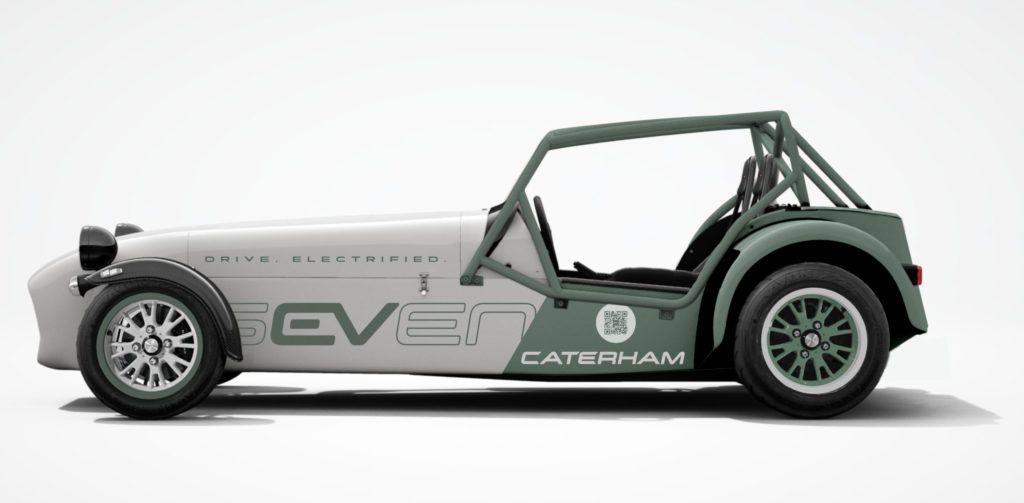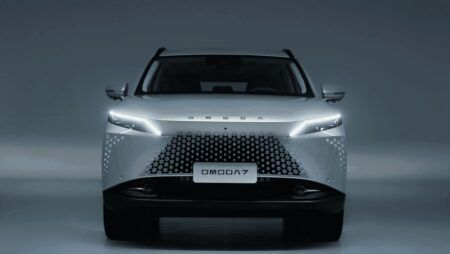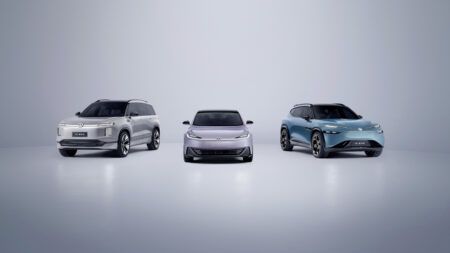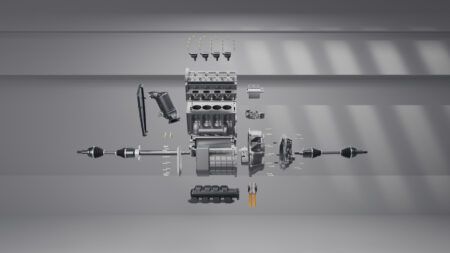Caterham has revealed the EV Seven – its technology development concept for a future fully electric Seven. The concept will test the feasibility of a lightweight electric Seven and enable Caterham to move a step closer to bringing a battery electric model to market that is as driver focused as its petrol counterpart.
Based on the Lotus Seven, a super lightweight sports car sold in kit and factory-built form by Lotus Cars from 1957 to 1972, the Caterham Seven is produced by Caterham Cars in the UK. The modern Caterham Seven is based on the Series 3 Lotus Seven, though developed to the point that no part is the same as on the original Lotus.
EV Seven is being engineered in collaboration with Swindon Powertrain Ltd – a leader in the development of advanced and ultra-robust powertrains for both road and motorsport applications. EV Seven is based on the larger Seven chassis and features a bespoke version of Swindon Powertrain’s E Axle, combined with an immersion cooled battery pack.
“Any future EV model we produce must be true to the DNA of a Caterham: lightweight, fun-to-drive and driver focused,” said Bob Laishley, CEO of Caterham. The main objective for this project is to develop a vehicle with a weight delta of no more than the equivalent of having a passenger on board. We’re never going to launch a one tonne Seven – we’d rather not do it.”
Any electric Seven must be useable on both the road and track. For the latter, this means being capable of a repeatable 20-15-20 drive cycle: the ability to drive on track for 20 minutes and recharge in 15 minutes with enough energy to drive for a further 20 minutes.
“Building a Seven that’s capable of a Sunday morning drive is achievable with current battery technology, but the challenge is for track use where the energy consumption is greatly increased,” said Laishley. “At the moment, immersion battery cooling is one of the best solutions in terms of coping with the rapid charge and discharge cycles that would be experienced on a racetrack.”
Immersion battery cooling uses a dielectric fluid, supplied by long-term Caterham technical partner Motul. The fluid is in direct contact with the cells enabling better thermal management during charge and discharge cycles.
The 51kWh immersion cooled battery is housed in the engine bay and transmission tunnel and is capable of DC rapid charging speeds of up to 152kW. It has a useable capacity of circa 40kWh, safely allowing the battery pack to withstand demanding track use followed by rapid charging without causing premature degradation.
The concept uses a bespoke version of Swindon Powertrain’s E Axle based on the HPDE family. It produces 240bhp at 9,000rpm and instantaneous peak torque of 250Nm. This will deliver a predicted 0-60mph time of approximately 4.0 seconds. The powertrain has been engineered to closely match the performance characteristics of the current production Seven to ensure EV Seven shares similar driveability to the ICE model.
EV Seven will remain true to the guiding principles of Caterham’s DNA, which is fun, simple, and lightweight with an absolute focus on delivering a fantastic driving experience. Chasing performance figures has not been a motivating factor during development, but remaining true to Caterham’s intrinsic values has.
The EV Seven concept will make its public debut at Goodwood Festival of Speed in the UK this July. Caterham is also developing another fully electric sports car concept that it will reveal this year. The design of this project is being led by the brand’s new Chief Designer, Anthony Jannarelly, and further details will be announced in the coming months.





